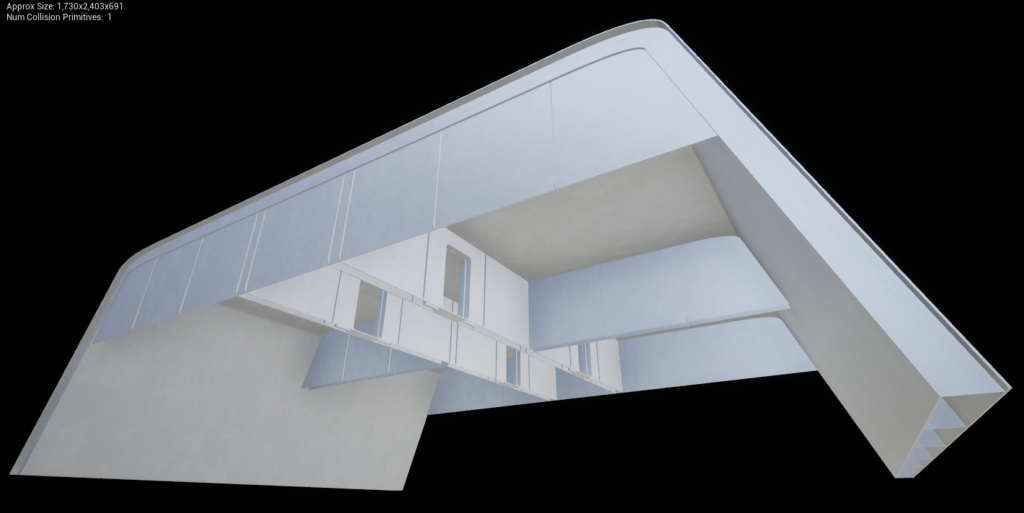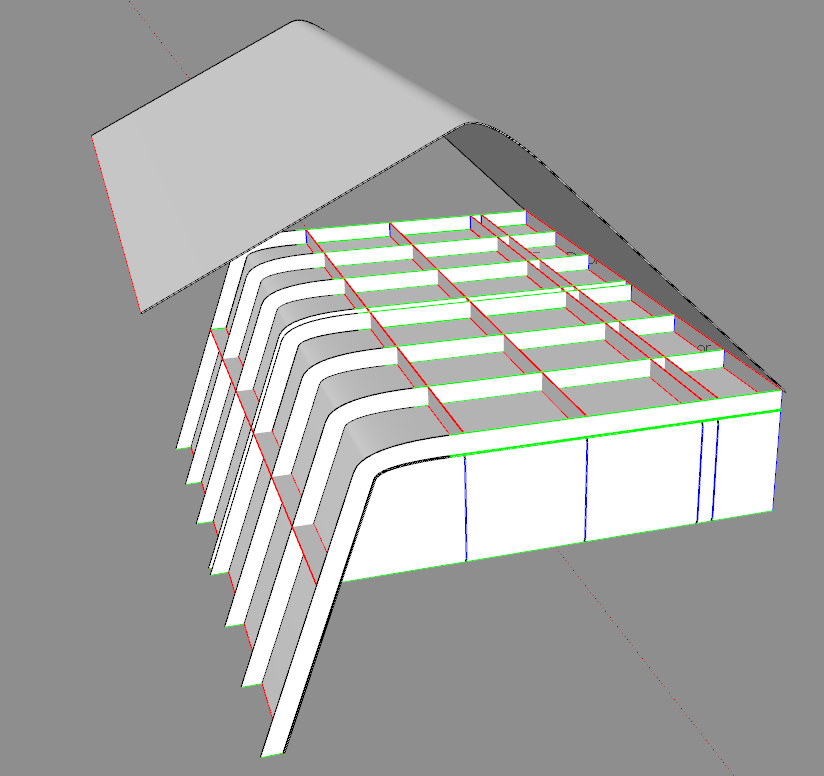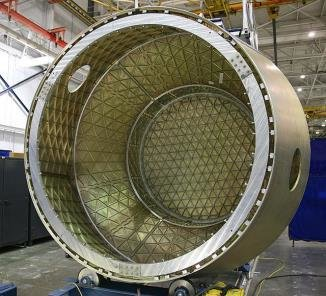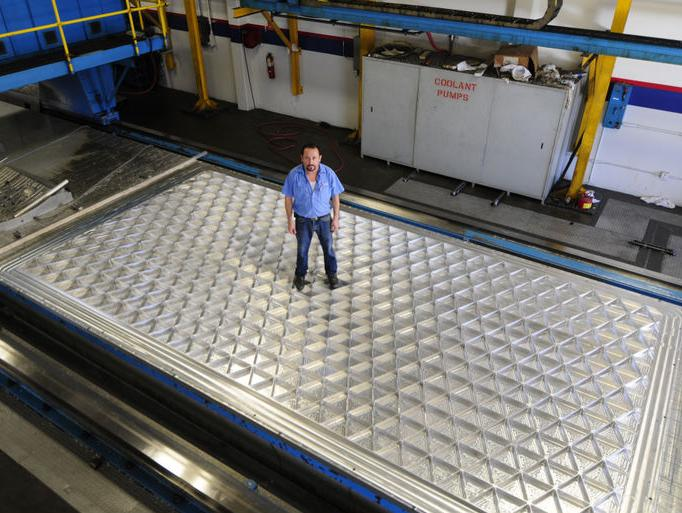Ever since I first started working on the Magellan Class, I’ve also been working on what you might call some “engineering standards” for the ship’s construction. That’s things like the thickness of the sheet metal (2.5cm), the width of the vertical stiffeners (5cm), the cavity between decks (50cm), the cavity between internal walls (40cm), and the cavity to the outer hull (50cm). Sticking to these standards means the ship’s construction remains consistent throughout and generally, makes life easier when fitting things together.
These standards have evolved and improved over time, however, so some of the older parts of the ship (like A Deck) are pretty outdated now. I’ve been sorting that out as part of the Bridge redesign, as well as properly splitting A Deck into separate pieces for the manufacturing process;
It’s still lacking a lot of detail (like windows), but in terms of the manufacturing standards, it’s now in line with the rest of the ship. I’m also making a couple of additional updates to the standard, the main one being fully enclosing the framework structure with sheet metal on both sides instead of forming it into i-beams. It will then have holes cut for weight reduction and routing of infrastructure. Between the metalwork, it looks like this with the lid off;
Those hollow sections will be filled with insulating material (for radiation protection and such), along with the pipes and cables, etc. On the inside where the holes are cut you’ll be able to see that in the ceilings.
Ultimately this design makes the structure a whole lot stronger, and if you imagine it’s being 3D printed on automated manufacturing lines, then this kind of internal honeycomb makes a lot of sense. Perhaps when the polygon budget is relaxed in UE5 we can make it an actual geometric honeycomb, which if you look at modern rocket component construction, that’s actually not too far from reality
Edit: The word I was looking for is Isogrid:
https://en.wikipedia.org/wiki/Isogrid




